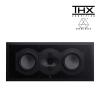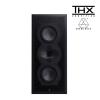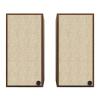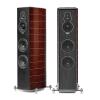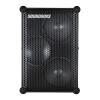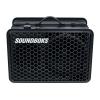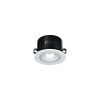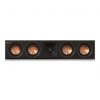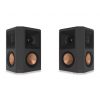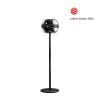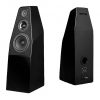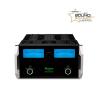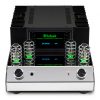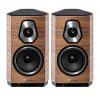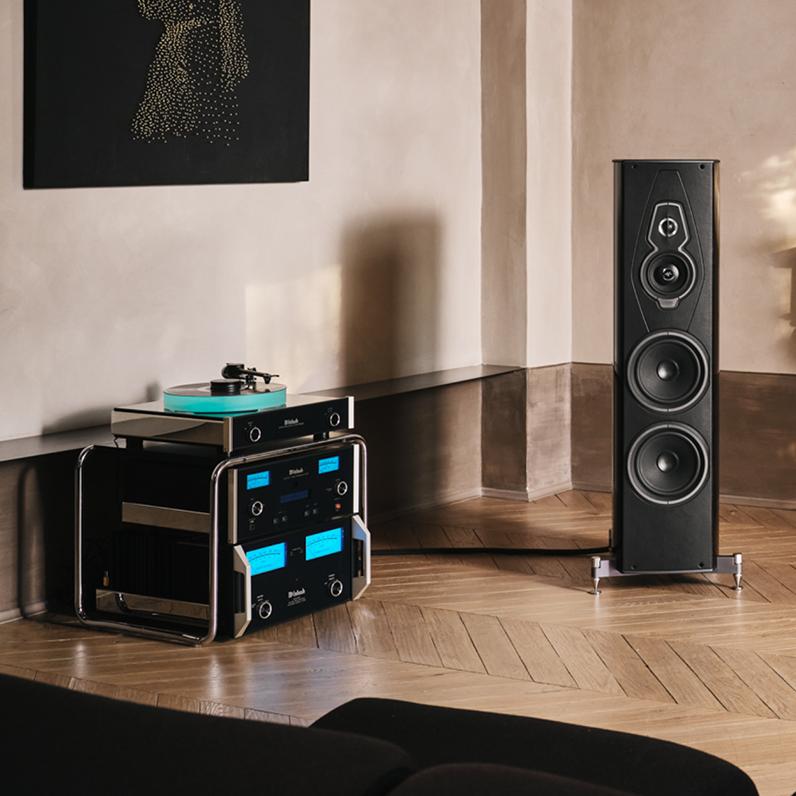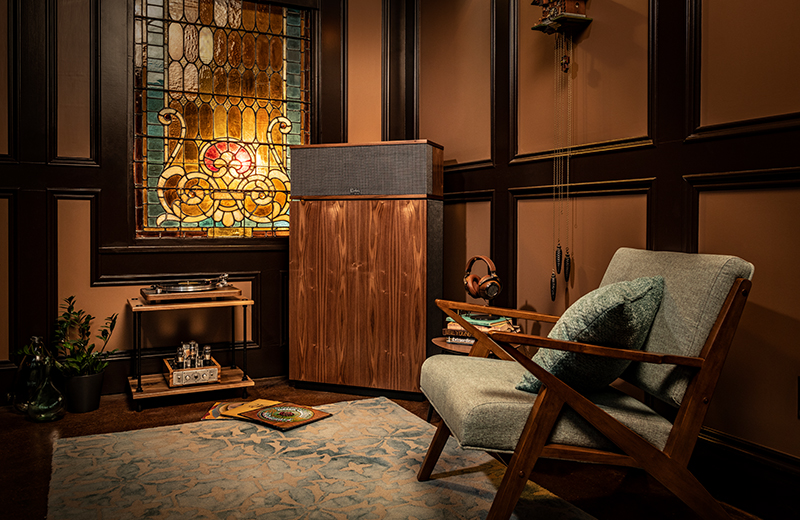A high-quality home audio speaker system can transform your listening experience, whether you're enjoying your favorite music, watching a movie, or hosting a party. At Dubai Audio, we offer a wide variety of speakers, each with its unique set of features. It's important to understand the basics of home audio speakers to make the best choice to meet your requirements. In this guide, we'll explore the different types of home audio speakers, their features, and how to choose and set up the perfect system for your space.
Types of Home Audio Speakers
Bookshelf speakers
Compact and versatile, bookshelf speakers are designed to fit on shelves, cabinets, or dedicated speaker stands. They are suitable for small to medium sized rooms and can deliver impressive sound quality despite their size. Bookshelf speakers are ideal for stereo listening or for the front or rear channels of a home theater system, particularly when space is limited.
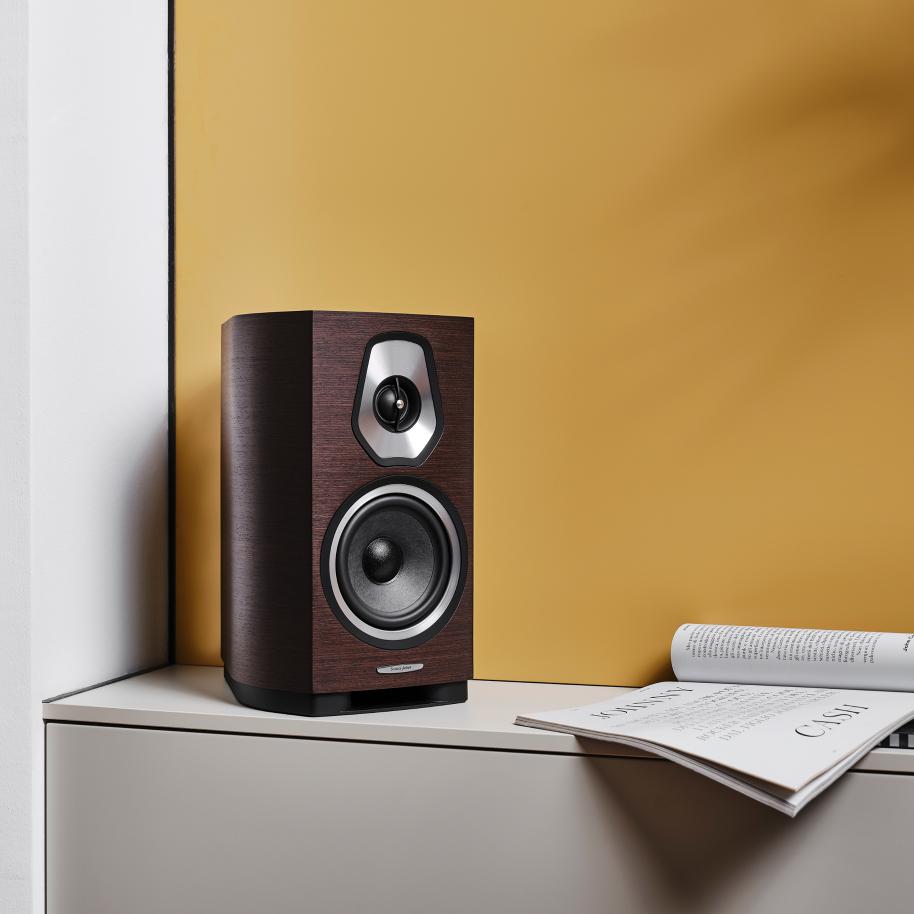
Compact and versatile, Sonus Faber's Sonetto I Bookshelf Speakers offer magnificent sound quality and room aesthetics for small to mid-sized rooms.
Floorstanding speakers
Floorstanding speakers, also known as tower speakers, offer a powerful and dynamic sound experience for larger rooms and home theaters. Featuring larger cabinets and multiple drivers, floor standers tend to provide greater scale through a broader frequency range, authority, and improved bass response. As a general rule of thumb, bigger speakers tend to be capable of delivering higher volumes, better dynamics, and more bass, though you shouldn't assume that rings true with every product - it's all relative. For the most part, floorstanding speakers are an excellent choice for larger rooms or dedicated home theaters where space is not an issue.

Sonus Faber's popular Serafino model receives its first upgrade to become the Serafino G2 speakers. A floor-standing speaker featuring advanced technology and incredibly high build quality - powered by McIntosh.
Center Channel Speakers
A center channel speaker is a critical component of a home theater set-up, responsible for delivering approximately 70% of the on-screen dialogue and sound effects. As one of the hardest working components in the home theater setup, it's worth the investment. The center channel speaker should typically share the same tonal qualities as your front right and left speakers to produce consistent voice-matched sound throughout your room. Take a look at our beginner's guide to surround sound for advice and tips.
Surround sound speakers
Surround sound speaker options include bookshelf speakers, custom installed (in-wall/on-wall speakers), or specialised dipole speakers that fire sound in multiple directions. They are typically sold as part of a 5.1 to 13.4+ channel system, with each speaker positioned strategically around the room contributing to the all-encompassing soundstage that makes home theater so immersive. Browse our curated range of home cinema packages to create an immersive surround sound setup for your movies and TV shows.
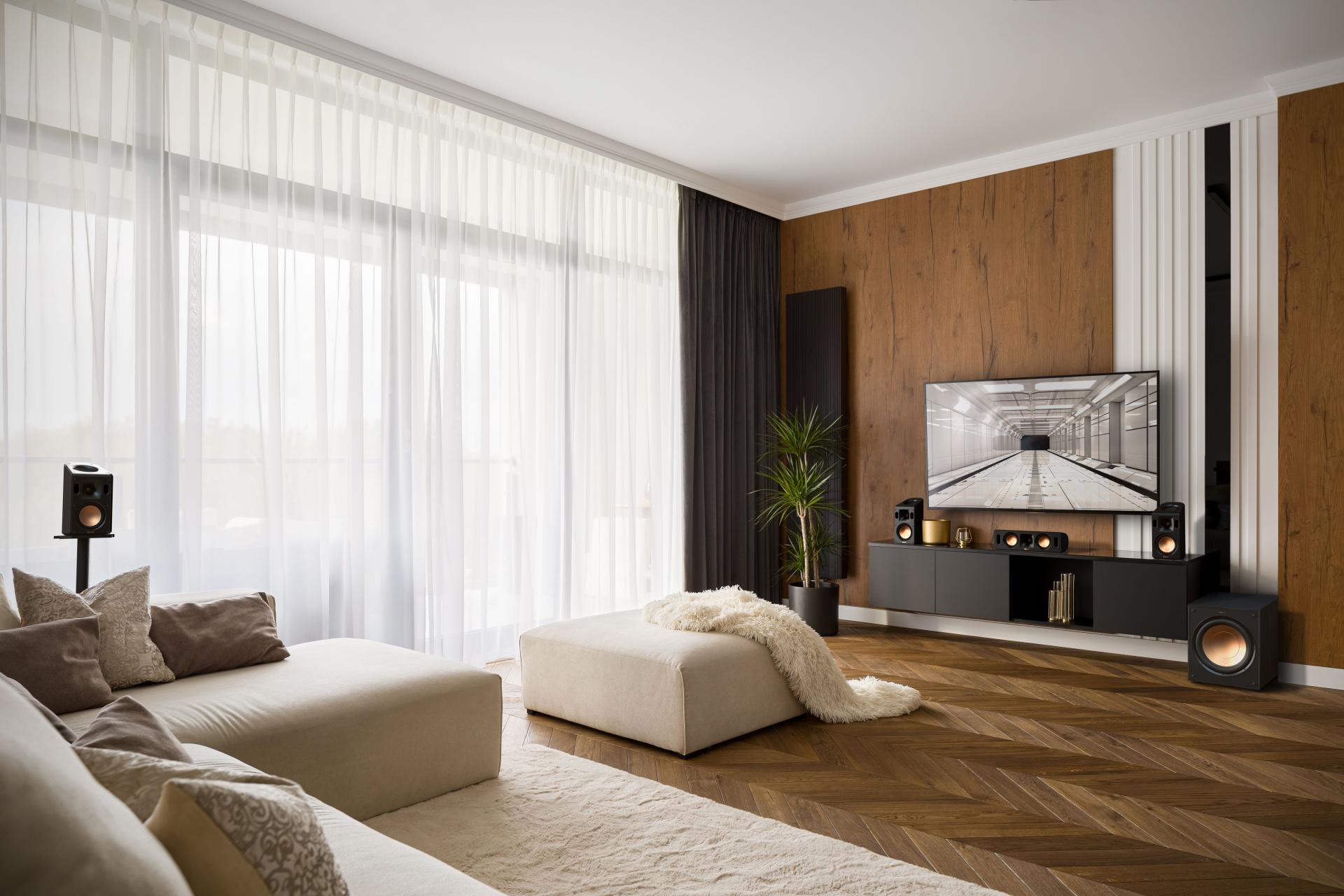
The Klipsch Reference Cinema System 5.1.4 with Dolby Atmos combines Reference Series acoustics with Dolby Atmos technology to deliver an immersive, multidimensional experience.
Subwoofers
Subwoofers are designed to reproduce low-frequency sounds, adding depth and impact to your audio experience. The SVS SB-2000 Pro, for instance, is a powerful subwoofer that delivers deep bass response, enhancing the overall sound quality of your home audio speaker system, especially during action-packed movies or bass-heavy music tracks.
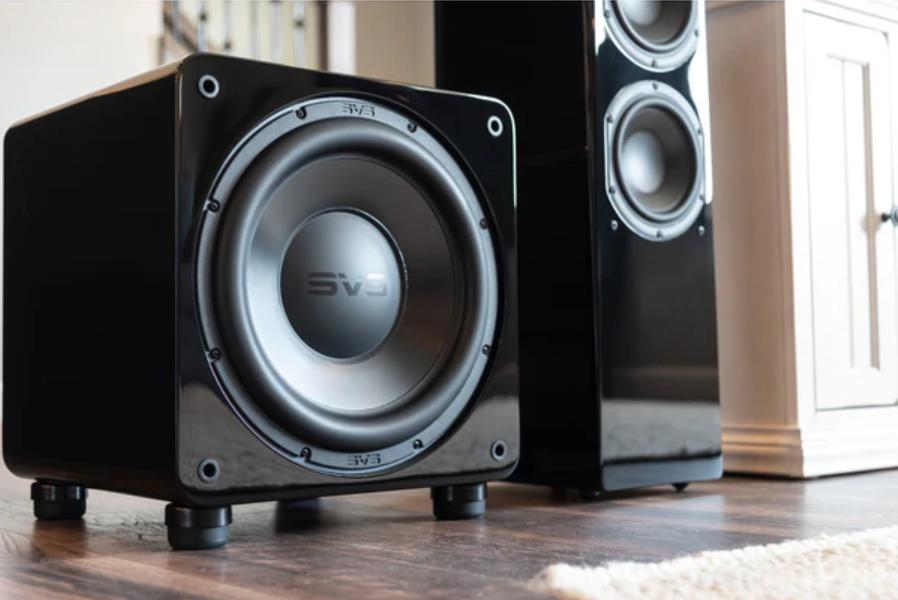
Elevate your audio system with deep, powerful bass from a dedicated subwoofer.
In-wall and in-ceiling speakers
These home audio custom installation speakers are designed to be installed directly into the walls or ceilings of your room, offering a space-saving and discreet solution. In-wall and in-ceiling speakers provide a clean, minimalist look without sacrificing sound quality. They are ideal for multi-room home audio systems or home theaters where seamless sound integration is desired.
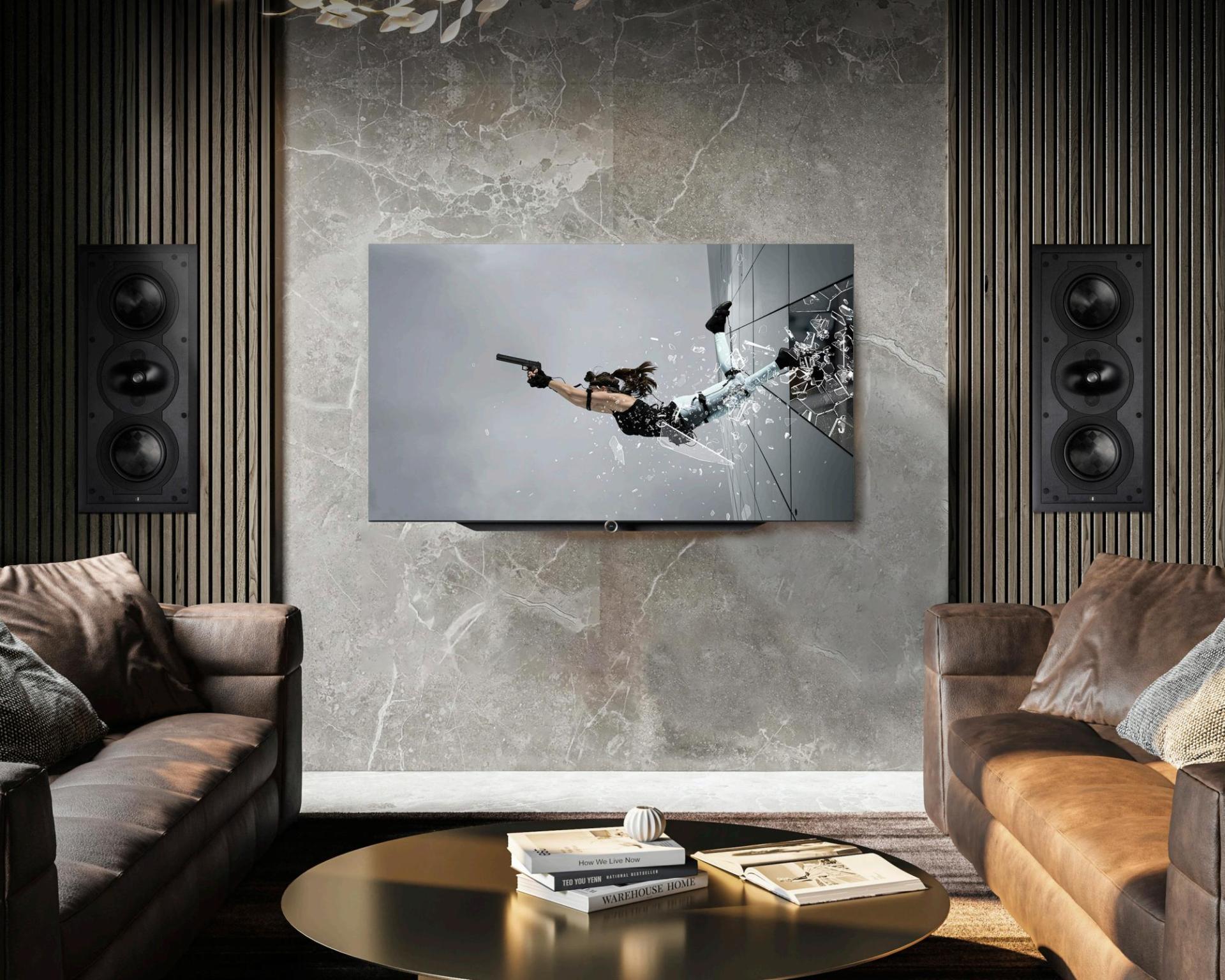
Space-saving and discreet, in-wall and in-ceiling speakers offer a clean, minimalist look without sacrificing sound quality. We offer custom installation solutions by a range of brands including GoldenEar, Klipsch, McIntosh, M&K Sound, Perlisten, Sonus Faber, SVS, and Zuma - to name a few.
Wireless and multi-room speakers
Wireless and multi-room home audio speakers offer a convenient solution for streaming music and audio throughout your home. The Syng Cell Alpha Wireless Speaker, for instance, is a popular multi-room speaker that can be connected to your Wi-Fi network, allowing you to stream music from various sources like Spotify, Apple Music, TV, or your personal library.
Outdoor speakers
Outdoor speakers are specifically designed to withstand the elements, making them perfect for patios, gardens, and pool areas. A Bluetooth speaker like Soundboks Gen. 3 speaker offers excellent sound quality and durability, allowing you to enjoy music and entertainment at the location of your choosing as well as on the go. Alternatively, you could opt for speakers that blend seamlessly with your outdoor environment like rock speakers by Klipsch.

Bring your favorite music outdoors with weather-resistant speakers designed for patios, gardens, and other outdoor spaces
Speaker Specifications and Features
Understanding speaker specifications
Frequency response
Frequency response represents the range of frequencies a speaker can reproduce, from the lowest bass notes to the highest treble notes. For example, a speaker with a frequency response of 50Hz-20kHz will produce sounds in that range.
Sensitivity
Sensitivity refers to how efficiently a speaker converts power into sound. Home audio speakers with higher sensitivity (measured in dB) will require less power from an amplifier or receiver to achieve a certain volume level.
Impedance
Impedance (measured in ohms) affects how much electrical resistance a speaker presents to an amplifier. A common impedance rating is 8 ohms, but most speakers will have 4 and some even 2 ohms ratings. It's crucial to match your home audio speakers' impedance with the appropriate amplifier to prevent damage and ensure optimal performance.
Power handling
Power handling indicates the maximum amount of power a speaker can handle without distortion or damage. A speaker with a power handling of 100W RMS can safely handle up to 100 watts of continuous power.
Points to Consider
Determine the purpose of the room/speaker system
Consider what the musical direction of the space you are looking to set up will take in order to better understand the speaker configuration you will require. Are you looking for music playback? Home theater? Will it be a listening room? If you primarily listen to music, a high-quality stereo setup with a pair of bookshelf or floor-standing speakers might be sufficient. For immersive movie experiences, a surround sound system, including home audio speakers like the Triton Series by GoldenEar coupled with an AVR, will enhance your home theater setup.
On the other hand, you may opt for a multi-room audio experience which essentially consists of a network of devices (speakers, amplifiers, soundbars, av receivers) that allow you to play your music throughout your home, controlled by a centralized device such as your smartphone or tablet. As for where your music collection should reside in order to enjoy the benefits of multi-room audio, whether you have a music server, USB device or are signed up to music streaming services such as Spotify, Apple Music, Amazon Music HD, Tidal or Deezer, you're good to go.
Balance budget and sound quality
Establishing a budget before seeing what's out there, will help you hugely narrow down your search.
Your components should be evenly matched, both tonally and in terms of price, so consider this before breaking the bank on a new pair of speakers that the rest of your kit can't do justice to.
While frugality and prudence are all very well, there's also a degree of future-proofing to be considered. If for example, you are planning to upgrade other components in your system, you may have cause to reconsider your budget to allow for speakers with the sonic stretch to reveal those upcoming improvements. With a little foresight, shelling out a few extra quid now could save you money in the long run. Our wide range of speakers will ensure your home audio system is treated to the ultimate audio performance that your budget allows.
Assess room size and acoustics
The size of your room and its acoustic properties play a significant role in speaker selection. Try to make sure to match the room size and volume with the size and energy-producing capabilities of your chosen speakers. Most speakers require a certain amount of space to sound their best, so ensure not to buy speakers that are too large for your room or vice versa. Just remember, you're dealing with sound waves that will be affected by whatever they encounter at whatever distance. If a manufacturer suggests you need two meters between its speakers and a wall, it's best not to push your luck.
Speaker placement and aesthetics
With all the time, money, and effort spent buying and putting together the hi-fi or home theater components of your dreams, if your speakers aren't positioned correctly in your space, your goal of achieving the best possible acoustics will remain elusive. All speakers are built differently. As such, the unit/pair has its unique placement specifications. Additionally, your chosen space will have its own dimensions and layout to consider. Most often, proper speaker placement for any given room is achieved by trial and error. The fix can be as easy as moving your speakers closer to your listening positions or doing the opposite: pulling your chair or sofa closer to the speaker themselves. But other variables come into play when plotting for your own sweet spot.
Before you start moving your speakers around your listening area, first try to figure out where you will be situated in relation to your setup. Identify the ideal listening spot - called the focal point or the sweet spot. You will want to be in the exact middle and approximately 5 to 10 feet away from your primary speakers. With two-channel arrangements in particular, it is crucial to maintain a balance between the speakers in order to give equal weight to each channel. Otherwise, you run the risk of one channel overwhelming the other, muddling the sound quality and drowning out the nuances in the recording.
As for aesthetics, no matter how great your speakers sound, if you (or your spouse) can't stand the sight of them, you aren't going to want to spend hours sitting in the same room.
Passive vs. Powered or Active Speakers
Passive speakers require an external amplifier or receiver to power them, with the speakers directing the signal to their separate drivers via a crossover. Examples of passive speakers include the majority of bookshelf, floorstanding, and in-wall speakers.
Powered speakers have built-in amplifiers, eliminating the need for a separate external amplifier or receiver which means the speaker itself requires a separate mains feed. They often feature volume and tone controls directly on the speaker and may include additional inputs for connecting other sources such as TVs, turntables, etc.
There is a small detail that differentiates between powered and active speakers. A powered speaker has its amplifier built in but runs the signal through a passive crossover which means the signal is amplified before being separated into frequency bands and fed to the drivers. With active speakers, however, each driver is fed by its own amplifier. Therefore, the crossovers work at line level rather than speaker level, you can use more accurate components, and therefore calibrate with more accuracy.
Whilst powered speakers might be better value for money than a separate speaker and amplifier combination, its important to keep in mind that if you want to upgrade your system in the future, you're going to have to do so with the whole thing.
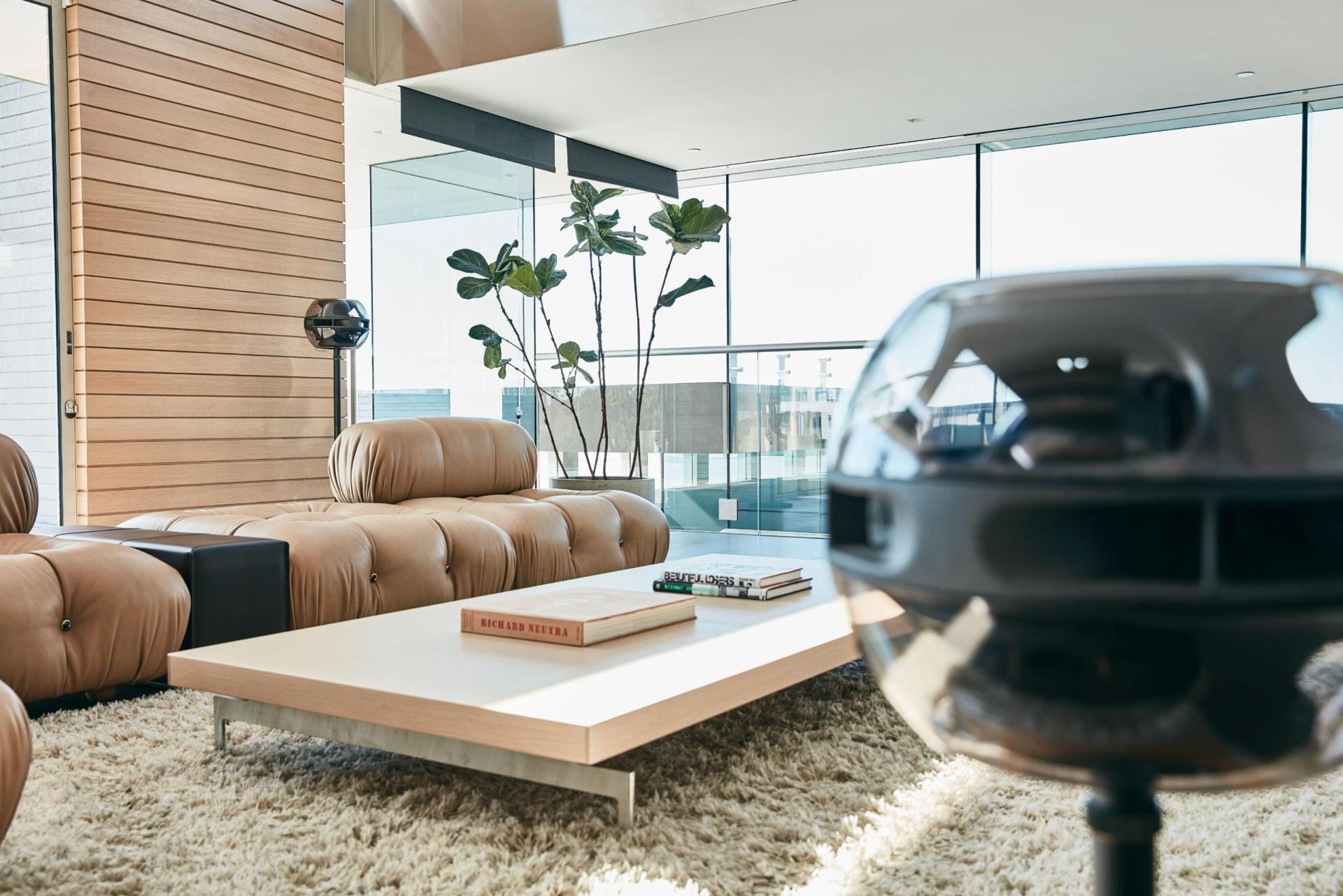
Amplification for Passive Speakers
For speakers without built-in amplification, an external amp is necessary to power them, and the appropriate amp type will vary based on your specific use case. If paired correctly, passive speakers will in most cases, outperform active speakers.
Stereo Receivers:
Ideal for simple music listening setups, stereo receivers combine amplification and a tuner in one unit. Browse our all-in-one amplifier category.
Integrated Amplifiers:
Combining a preamplifier and power amplifier in one device, integrated amplifiers offer more control and flexibility for your audio system. They are similar to stereo receivers, without tuners, and typically use more robust power supplies. An example of this is McIntosh's retro-inspired MA252 2-channel hybrid integrated amplifier that combines the best of vacuum tube and solid-state circuit design to create an amplifier that's both visually and sonically stunning.
Preamplifiers and Power Amplifiers:
Want the best possible sound from your speakers? Better sound can usually be obtained more easily through the use of separate components as opposed to all-in-one solutions. As an added bonus, separates will be more beneficial in the long term, giving you the flexibility to upgrade your stereo or home theater preamplifier for the latest feature set whilst keeping the same power amplifier for many years. Great choices include McIntosh's c2700 2-channel vacuum tube amplifier and their MC462 2-channel solid-state amplifier.
Home Theater Receivers:
Home theater receivers: At the heart of your home theater system, the home theater receiver is the central component connecting and handling the entire system's input and output signals. They provide multi-channel amplification and additional features like video switching and surround sound processing. A popular choice is the Integra DRX 5.4 9.2-channel network a/v receiver.
Our Specialists are here to help
With so many options and points to keep in mind, it can be challenging to know where to start. We hope the above will give you guidance to get you on the right track.
We'd recommend you do further research before making your purchase Use the above to narrow down your search and keep the endless possibilities from overwhelming you. Next, we'd recommend reading reviews on your products of interest, which brands/products they normally pair best with, and if possible, visiting your nearest hi-fi retailer. Dubai Audio would be a good starting point and in most cases, it would likely be the only showroom you'd need to visit.
Our specialists are on hand during our office hours, 6 days a week. Give us a call or chat with us via Whatsapp.
